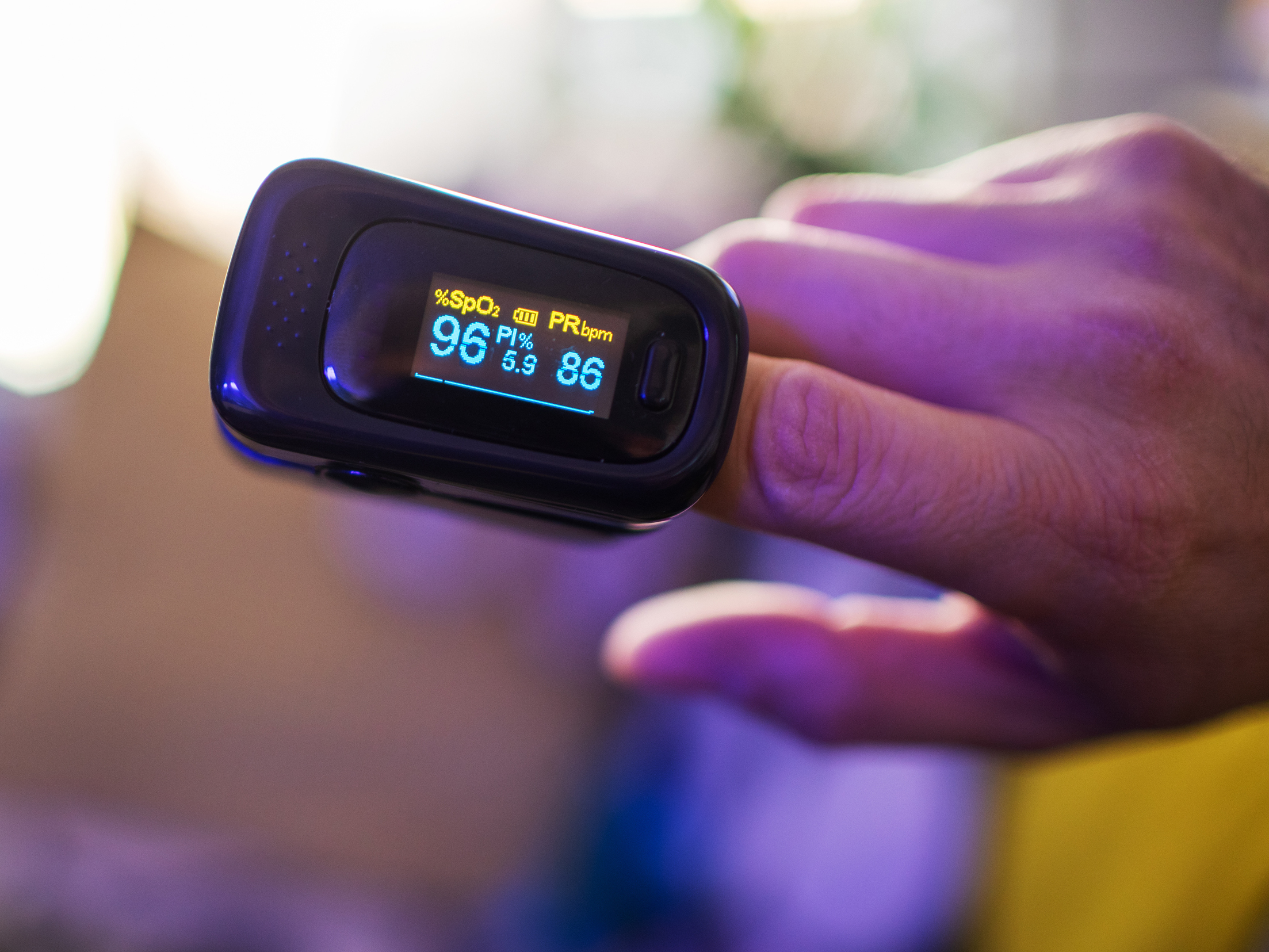
Buying a good pulse oximeter is now easy with the help of the internet. Once you know how a pulse oximeter works, you can make sure you get accurate readings from your device.
Carbon monoxide
A very small amount of carbon monoxide molecules can attach to a patient's haemoglobin to replace oxygen molecules. It is difficult for the oxygen meter to distinguish between each molecule and the reading will show the total saturation of oxygen and carbon monoxide. If 15% of the haemoglobin is carbon monoxide and 80% oxygen, the reading is 95%. This reading can be very dangerous. This is a great reason not to use pulse oximetry in a person with smoke inhalation, smokers, and carbon monoxide poisoning.

Hand-held and fingertip pulse oximetry work by shining two lights on the translucent part of a person's fingertip and measuring the difference in light absorption caused by changes in blood flow in the body. Total light absorption is the sum of the constant component and the pulsatile component, which is almost exclusively due to arterial pulsations. Transparency and blood flow in the fingertip or other part of the body used for reading can affect the accuracy of the reading. For example, if the blood flow is irregular or has scarring or blockages, the reading may not be accurate. Under perfect conditions, the pulse oximeter should give very accurate readings.
Lack of blood volume
Conditions such as hypothermia, hypovolemia, and hypotension may have adequate oxygen saturation but cause problems in transporting oxygen to the body. Because the blood flow to the patient's body is low, the pulse oximeter may not be able to detect the pulse waveform adequately, resulting in no signal or very inaccurate readings.
Anemia
The normal human value is 11-18 g/dl. Low haemoglobin levels may affect the pulse oximeter.
External disturbances
Strong sunlight can cause inaccurate readings. Electromagnetic fields can affect the reading depending on how strong they are. Try to keep the pulse oximeter away from these conditions.
Signals that are not accurate
Irregular signals can cause problems for the pulse oximeter. Irregular heartbeats and patient movement can cause incorrect results. If you have a pulse oximeter with a waveform, you can usually tell if this is a problem.
Nail-biting and fingernail polishing
Nails pressed into your fingernails or many types of fingernail polish can affect your readings. Take them off.
Intravenous dyes
Intravenous dyes (such as methylene blue, indigo carmine, and indocyanine green) are likely to cause inaccurate readings.
Skin pigmentation
Believe it or not, skin colour can make SpO2 readings lower than they should be. Try to find the lightest part of the skin where the oximeter is placed.
Methemoglobin
Methemoglobin is a form of hemoglobin that does not carry oxygen. The normal concentration of haemoglobin is about 1-2% of this form... A high concentration of methemoglobin causes the pulse oximeter to read about 85%, regardless of the actual oxygen saturation level. Higher methemoglobin levels may be hereditary or due to exposure to certain chemicals or drugs that may have been taken.



























